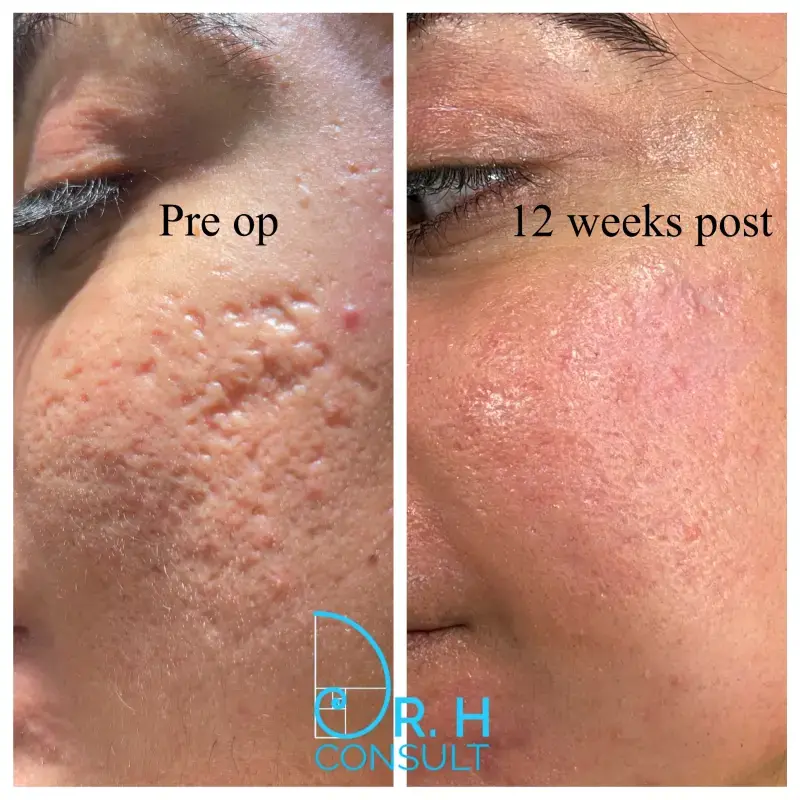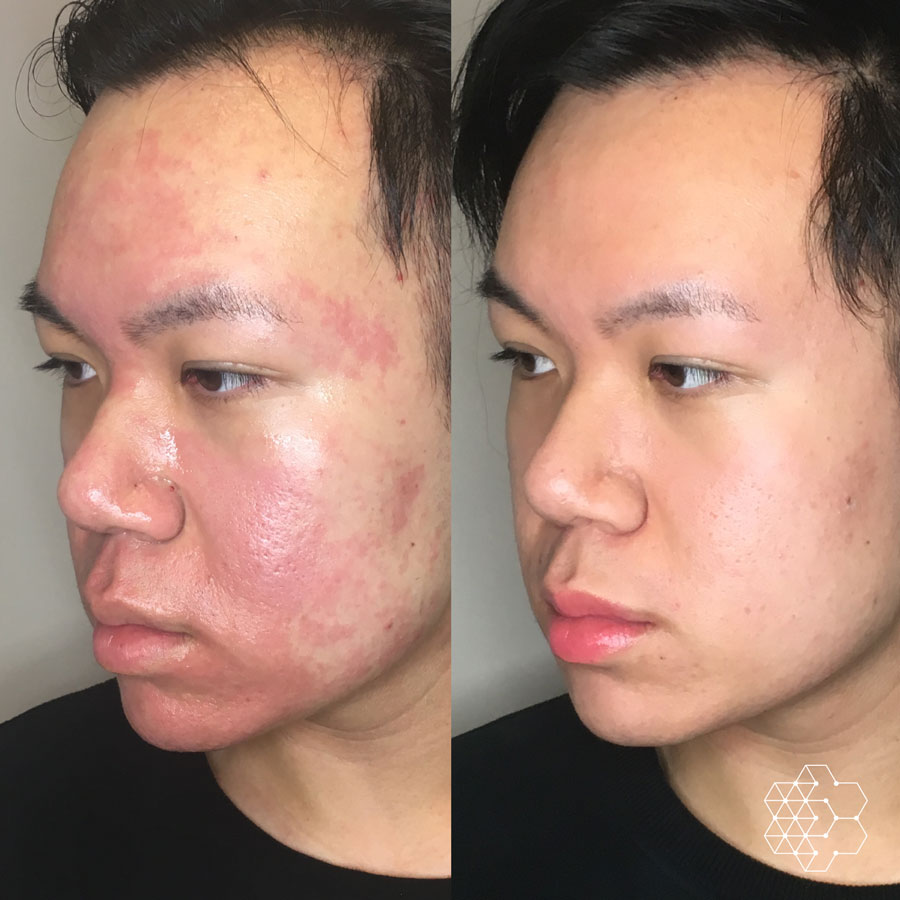Skin Rejuvenation Treatments: The Ultimate Guide to Rejuvenating Your Skin
Skin Rejuvenation Treatments: The Ultimate Guide to Rejuvenating Your Skin
Blog Article
Understanding the Different Skin Conditions and Reliable Treatment Options for Acne Scars
Acne marks stand for a complex interaction of skin disease that substantially influence individuals' self-confidence and total skin wellness. Recognizing the unique types of acne scars-- atrophic and hypertrophic-- along with their underlying causes, is critical for establishing efficient therapy techniques. Numerous healing options exist, varying from sophisticated dermatological procedures to natural solutions. The effectiveness of these therapies typically pivots on tailored evaluations by qualified specialists. As we explore the landscape of acne scar management, it comes to be noticeable that the trip toward more clear skin might entail more than just topical remedies.
Kinds Of Acne Scars

On the other hand, hypertrophic marks result from an overflow of collagen throughout the healing procedure, bring about raised locations on the skin. These marks are often solid and can vary in shade, occasionally showing up red or darker than the surrounding skin.
Comprehending these kinds of acne marks is vital for creating a reliable therapy strategy - acne scars. Options might include chemical peels, laser treatment, microneedling, or facial fillers, customized to the specific scar type. A detailed consultation with a skin doctor can assist determine one of the most ideal intervention, taking into consideration the person's skin type, scar intensity, and general skin health and wellness
Root Causes Of Acne Scarring
Scarring happens as a result of the body's all-natural healing reaction to inflammation and injury triggered by acne sores. When acne types, it causes an inflammatory reaction, leading to the release of various cytokines and growth elements that promote recovery. This process can sometimes lead to excessive tissue formation or poor fixing, resulting in scars.
The primary root causes of acne scarring consist of the extent of the acne itself, period of the sores, and private skin types. Severe inflammatory acne, such as cysts and blemishes, is most likely to lead to scarring because of deeper cells damage. In addition, inappropriate handling of acne lesions, such as selecting or squeezing, can worsen tissue injury and swelling, enhancing the likelihood of scarring.
Genetic proneness likewise plays a significant duty; individuals with a household history of scarring go to a higher risk. In addition, skin type and shade can influence mark development, as darker skin tones may experience post-inflammatory hyperpigmentation, while lighter skin might create atrophic scars.
Eventually, comprehending these reasons is important in handling acne and mitigating the possibility for scarring.

Treatment Options for Scarring
Reliable treatment options for acne scarring vary depending on the kind and severity of the marks. Generally categorized right into atrophic, hypertrophic, and keloid marks, these problems require tailored methods for optimum results.
For atrophic marks, which are characterized by a loss of tissue, therapies such as chemical peels, microdermabrasion, and laser treatment are commonly employed. These techniques promote skin revival and stimulate collagen manufacturing, thus boosting skin texture. Subcision, a minimally intrusive procedure, can additionally work by damaging up coarse bands underneath the skin.
Hypertrophic and keloid scars can be more testing to treat. Options include corticosteroid injections to minimize inflammation and flatten the marks. In many cases, cryotherapy or laser therapy might be advised to reduce their appearance.
Surgical options are offered for extreme scarring, where excision or skin grafting might be necessary. It's crucial for people to seek advice from with a skin specialist to analyze their certain scar type and go over the most ideal treatment strategy. Integrating several treatments frequently yields the very best end results, ensuring that each patient's unique skin problem is addressed effectively.
Home Treatments and All-natural Solutions
Natural solutions and natural home remedy can give an obtainable strategy for people seeking to enhance the look of acne marks (acne scars). Various ingredients found in the home kitchen area have shown potential advantages in boosting skin appearance and advertising recovery

One more efficient choice is lemon juice, which serves as an all-natural exfoliant and can lighten hyperpigmentation. It must be used carefully, as it may trigger photosensitivity. Oat meal masks are also valuable; their gentle peeling can assist eliminate dead skin cells while comforting inflammation.
Crucial oils, such as tea tree oil and lavender oil, can better sustain scar healing as a result of their antimicrobial residential or commercial properties. It is vital to carry out a patch examination prior to using any type of treatment to make sure there are no negative reactions. These natural options can be a complementary technique in read the journey to decrease acne scars.
Avoiding Future Scarring
Embracing a positive method to skincare can considerably lower the danger of creating future acne marks. Among the vital techniques is to handle acne effectively as it arises. This includes using non-comedogenic skin care items this and medications prescribed by skin specialists that target acne without irritating the skin. Normal cleansing, exfoliation, and hydration can assist keep skin health and stop blocked pores.
Furthermore, staying clear of the lure to choose or squeeze acne sores is essential, as this can result in swelling and subsequent scarring. Rather, people ought to concentrate on applying topical treatments that advertise healing and minimize inflammation. Components such as salicylic acid, benzoyl peroxide, and retinoids are understood for their effectiveness in taking care of acne and reducing scars.
Sun defense is one more crucial component; exposure to UV rays can restrain and darken scars healing. For that reason, utilizing a broad-spectrum sunscreen daily can minimize these impacts - acne scars.
Lastly, maintaining a healthy and balanced diet abundant in anti-oxidants and staying moisturized supports skin regeneration. By executing these safety nets, people can considerably reduce their danger of future scarring and advertise total skin health and wellness.
Verdict
To conclude, a comprehensive understanding of acne marks, incorporating both hypertrophic and atrophic types, is crucial for reliable treatment strategies. Tailored treatments, consisting of specialist treatments and natural home remedy, can significantly enhance skin appearance and structure. Safety nets additionally play an essential duty in minimizing future scarring. Appointment with a skin doctor continues to be necessary to devise see individualized approaches that take into consideration specific skin kinds and mark severity, inevitably improving the effectiveness of scar administration methods.
Acne scars represent an intricate interaction of skin problems that considerably impact individuals' self-esteem and general skin health and wellness. The 2 main groups of acne marks are atrophic and hypertrophic scars. These marks are further classified right into three subtypes: ice choice scars, which are deep and narrow; boxcar marks, which are broader and have well-defined edges; and rolling scars, which develop a wave-like look due to uneven skin appearance.
A complete appointment with a skin doctor can help determine the most ideal treatment, taking right into account the person's skin type, scar intensity, and total skin health and wellness.
Appointment with a skin doctor stays essential to design customized approaches that take into consideration specific skin kinds and mark seriousness, ultimately enhancing the efficiency of mark administration strategies.
Report this page